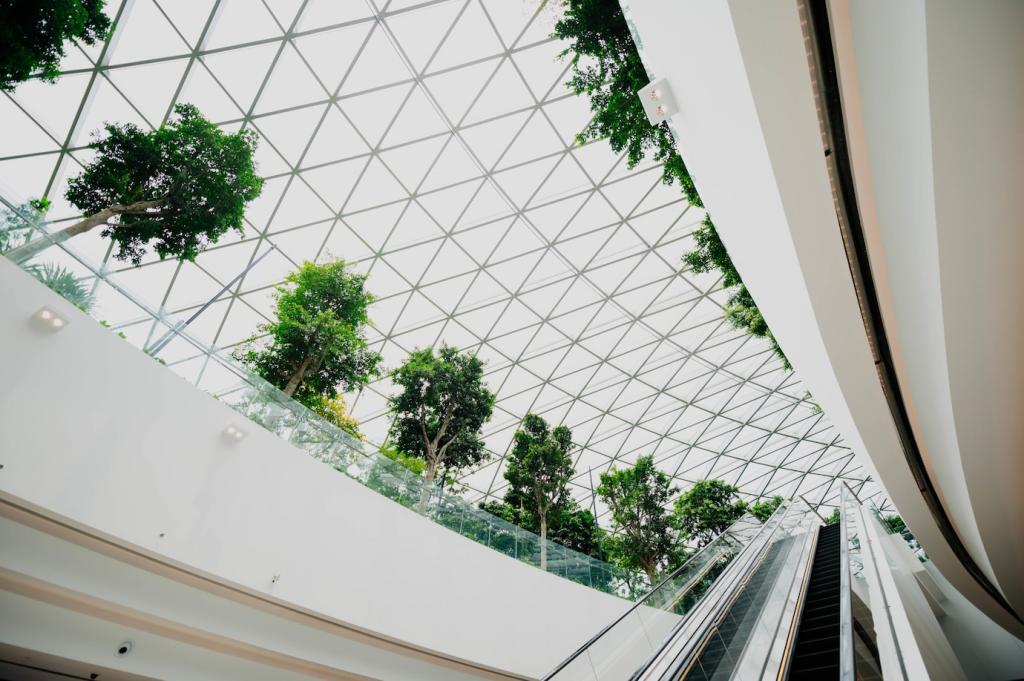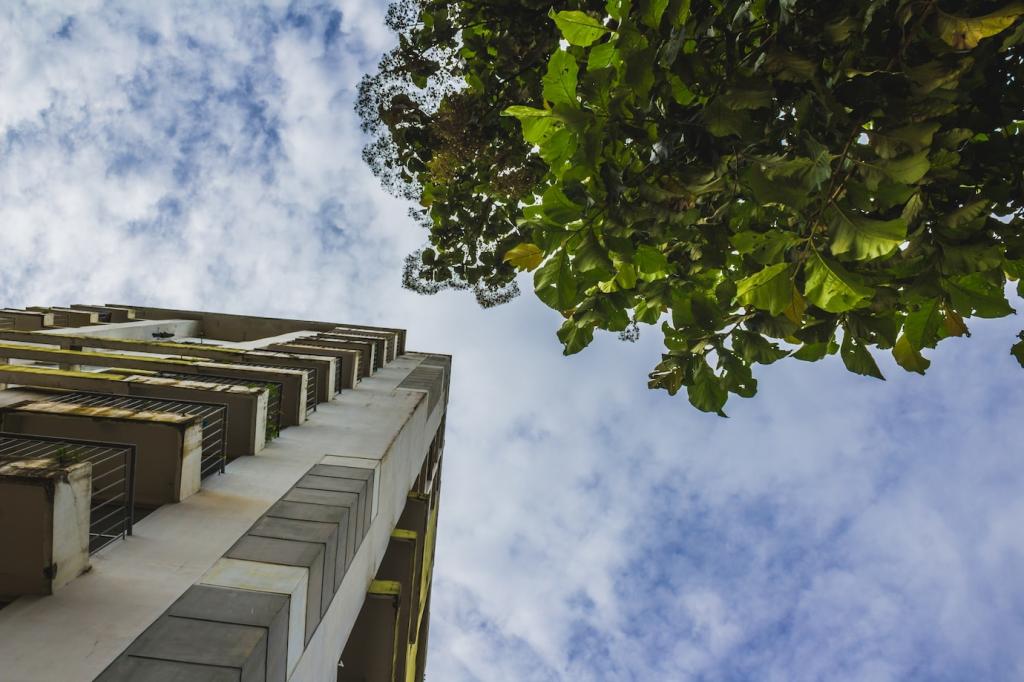Sustainable Home Design Practices
Sustainable home design practices focus on creating living spaces that reduce environmental impact while enhancing wellness, comfort, and efficiency. These approaches integrate environmentally-friendly materials, energy-saving strategies, and innovative design concepts to support healthier living and reduce resource consumption. As global concerns about climate change grow, adopting sustainable practices within residential architecture becomes increasingly essential. Sustainable design not only benefits the environment but also results in long-term savings and improved quality of life for homeowners.
Energy Efficiency in Home Design
Proper insulation and strategic use of thermal mass play a crucial role in maintaining consistent indoor temperatures. High-performance insulation minimizes heat transfer between the indoors and outdoors, reducing the need for mechanical heating and cooling. Thermal mass materials like concrete, brick, or stone absorb, store, and release heat over time, helping regulate temperature fluctuations. When integrated in the building envelope, these features ensure energy stability, improve comfort, and ultimately reduce power consumption.

Water Conservation Strategies
Low-Flow Plumbing Fixtures
Modern low-flow plumbing fixtures, such as faucets, toilets, and showerheads, can dramatically reduce household water consumption without sacrificing performance. By leveraging air mixing technology or optimized design, these fixtures deliver sufficient pressure while using less water. Replacing conventional fittings with EPA WaterSense-labeled alternatives is a straightforward and effective way to minimize daily water use and meet sustainability goals in home design.
Rainwater Harvesting
Rainwater harvesting systems capture and store rainwater from roofs and other surfaces for use in irrigation, toilet flushing, or laundry. These systems range from simple rain barrels to more complex cistern and filtration setups. By utilizing rainwater, homeowners reduce demand on municipal water supplies and help manage stormwater runoff, ultimately contributing to lower water bills and improved local water resilience.
Greywater Systems
Greywater systems recycle gently used water from sinks, showers, and washing machines for non-potable applications like landscape irrigation. Treating and redirecting greywater decreases fresh water demand and mitigates pressure on sewage infrastructure. With careful design and adherence to local codes, integrating greywater reuse into homes can deliver significant environmental benefits and foster sustainable water management practices.
Sustainable Materials and Resources
Incorporating recycled and reclaimed materials helps divert waste from landfills and conserve natural resources. Options range from recycled steel and glass to reclaimed wood and brick. These materials provide character, history, and sustainability credentials, showing that eco-conscious choices can be both beautiful and functional. Moreover, using salvaged materials often reduces transportation emissions and supports a circular economy.
Indoor Environmental Quality
Natural Daylighting
Maximizing natural daylight in home design reduces the need for artificial lighting and creates uplifting, balanced interior spaces. Proper window placement, skylights, and internal light wells channel sunlight deep into rooms, minimizing energy use and supporting natural circadian rhythms. Access to daylight has been shown to improve mood, productivity, and general wellbeing, underscoring its value within sustainable homes.

Smart Home Technology for Sustainability
Energy Monitoring and Automation
Smart meters, thermostats, and energy management platforms provide real-time insights into energy use and automate operations for maximum efficiency. These systems can adjust heating and cooling based on occupancy, schedule appliances to run during off-peak hours, and identify opportunities for further savings. By putting actionable data into the hands of homeowners, energy monitoring technology supports responsible consumption and ongoing improvement.
Automated Lighting Control
Automated lighting systems use sensors, timers, and programmable controls to optimize lighting throughout the home. Lights can be set to turn off when rooms are unoccupied or adjust intensity based on the time of day. These smart solutions conserve electricity, extend bulb life, and create customizable atmospheres, reducing overall environmental impact while enhancing user convenience and comfort.
Smart Water Management
Smart irrigation controllers, leak detectors, and water monitors form part of an intelligent approach to water management at home. These tools help identify leaks, detect excess usage, and optimize watering schedules based on real-time weather data. By addressing issues before they escalate, smart water systems contribute to conservation efforts, lower water bills, and the prevention of water damage.
Native and Drought-Tolerant Planting
Utilizing native and drought-tolerant plants reduces irrigation demands and fosters resilient landscapes. These species are adapted to local climate conditions and require less maintenance, pesticides, and fertilizers. Native plantings support pollinators and wildlife, restore habitat, and contribute to the overall health of the ecosystem, making them a preferable choice in sustainable home landscaping.
Permeable Surfaces and Stormwater Management
Permeable paving materials, such as gravel, permeable concrete, or pavers with spaced joints, allow rainwater to infiltrate the ground naturally, reducing runoff and recharging groundwater. Incorporating rain gardens or bioswales further manages stormwater by filtering and absorbing excess water. These sustainable strategies minimize erosion, decrease pollution risks, and help maintain balanced local hydrology.
Flexible Floor Plans
Adaptable floor plans allow spaces to be easily reconfigured as family needs change, accommodating life transitions such as aging in place or growing families. Movable partitions, open layouts, and multi-functional rooms provide versatility without the need for significant construction. This approach extends the usable life of a home, reduces waste, and supports sustainable living across generations.
Durable Finishes and Construction
Selecting durable materials and construction techniques extends the lifespan of a home and reduces long-term maintenance and repair needs. Materials should be chosen for their performance in local climate conditions, resistance to wear, and ease of upkeep. By investing in durable options, homeowners save resources and costs over time, ensuring that sustainable choices deliver real-world value.
Timeless Design Principles
Timeless, universally appealing design transcends fleeting trends, helping to maintain a home’s relevance and desirability well into the future. Emphasizing classic elements, functional layouts, and enduring aesthetics reduces the need for significant updates as tastes evolve. The careful application of timeless principles in sustainable design fosters resilience, reduces waste, and supports environmental and economic sustainability.
